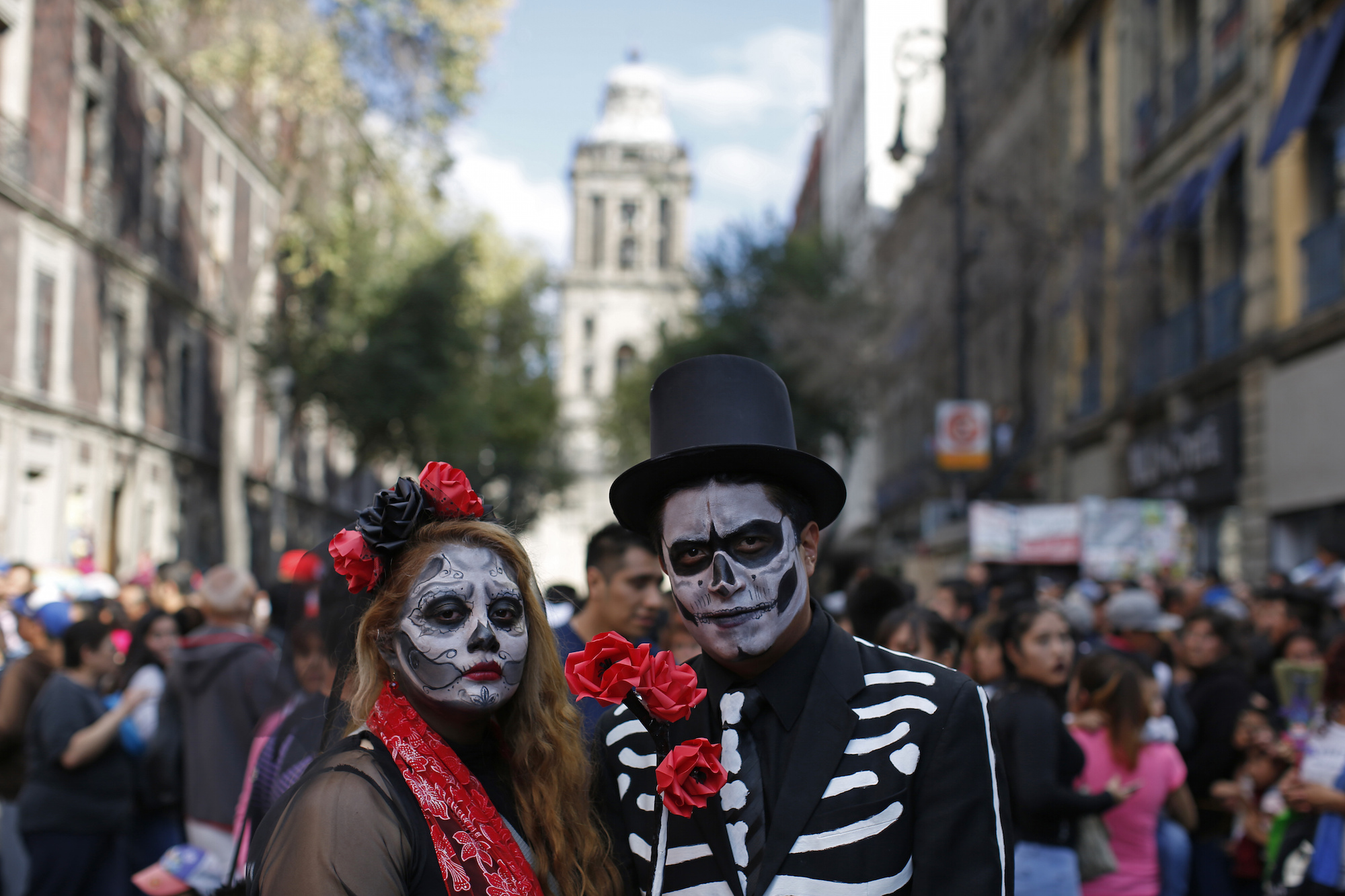El Día de los Muertos (or the Day of the Dead) started on Tuesday, November 1 and ended a day later.
For the holiday, families across Mexico gather in cemeteries and public squares to honor their deceased loved ones in traditional costumes and makeup.
Check out photos from this year’s festivities and memorials below.
Mexico’s Day of the Dead festival is known for amazing skeletal makeup. Ecuador, Brazil, and Bolivia have their own festivities, too.

Foto: source Reuters
Some people incorporate flower crowns, glitter, and jewels into their costumes.

Foto: source AP Images
The holiday dates back 3,000 years.

Foto: source AP Images
Tradition calls for lighting candles and bringing bouquets to the graves of family and friends. November 1 (called the Day of the Innocents) is meant to honor deceased infants and children, while November 2 (called the Day of the Dead) is a day to honor deceased adults.

Foto: source Getty Images
As they honor the life of their loved ones, people create decorative memorials.

Foto: source AP Images
The ceremonies are “mestizo,” combining pre-colonial and Roman Catholic customs.

Foto: source Getty Images
A central idea surrounding the festivities is the Aztec belief that the dead come back to Earth for one day every year.

Foto: source Getty Images
Tens of thousands of people turned out for the Day of the Dead parade in Mexico City this year.

Foto: source AP Images
Source: The Associated Press
Traditionally, the Day of Dead only consisted of quiet family gatherings at graves. But in recent years, it has branched out to include mass celebrations with food and drink.

Foto: source AP Images
Source: The Associated Press
Art installations are a big part of the festivities in Mexico City.

Foto: source Getty Images
Below, a man painted a Styrofoam skull for an arts competition as part of the parade.

Foto: source AP Images
Women often dress up as La Calavera Catrina, a popular Mexican skeleton character from the early 1900s who wears a large hat.

Foto: source Reuters
The Day of the Dead is also often a day for activism. In 1997, sex workers in Mexico City honored people who died of AIDS.

Foto: source Reuters
In 2002, a crowd carried a banner that read "Guilliani dreamers never die" (in homage to the anti-globalization protester shot dead by a police officer the year before).

Foto: source Reuters
This year, protestors marched to protest violence against women.

Foto: source AP Images
The rape and murder of 16-year-old Lucía Pérez in Argentina last October sparked the protests.

Foto: source Getty Images
Dressed as Catrinas, female protestors held signs and chanted "We want ourselves alive."

Foto: source AP Images

